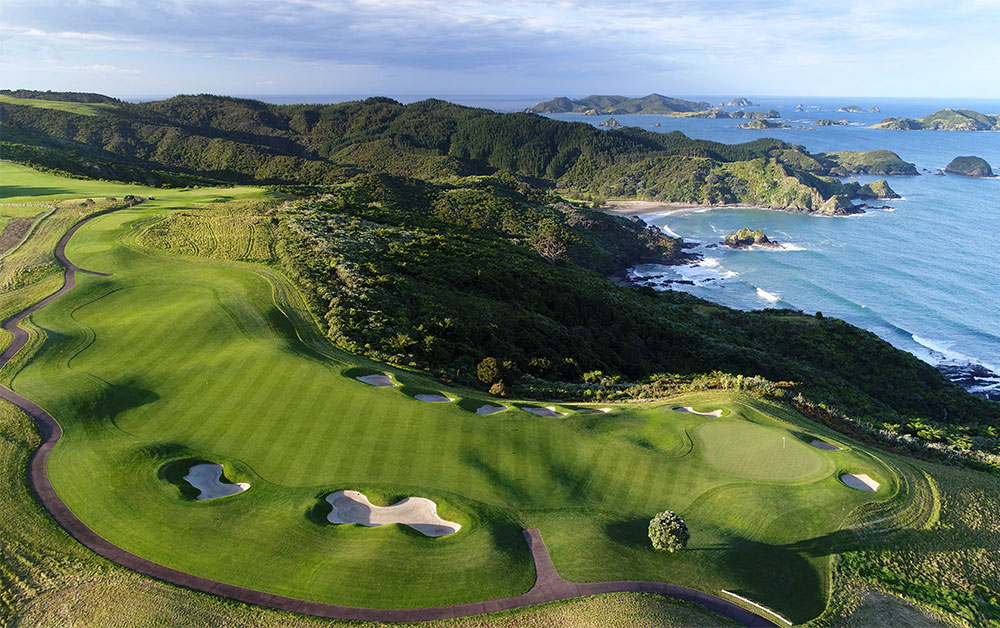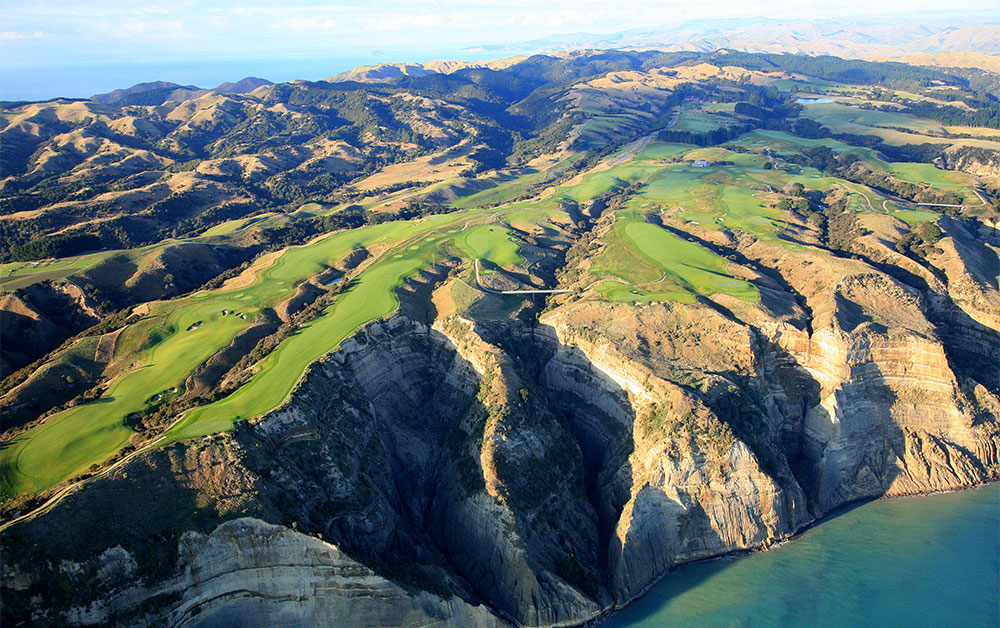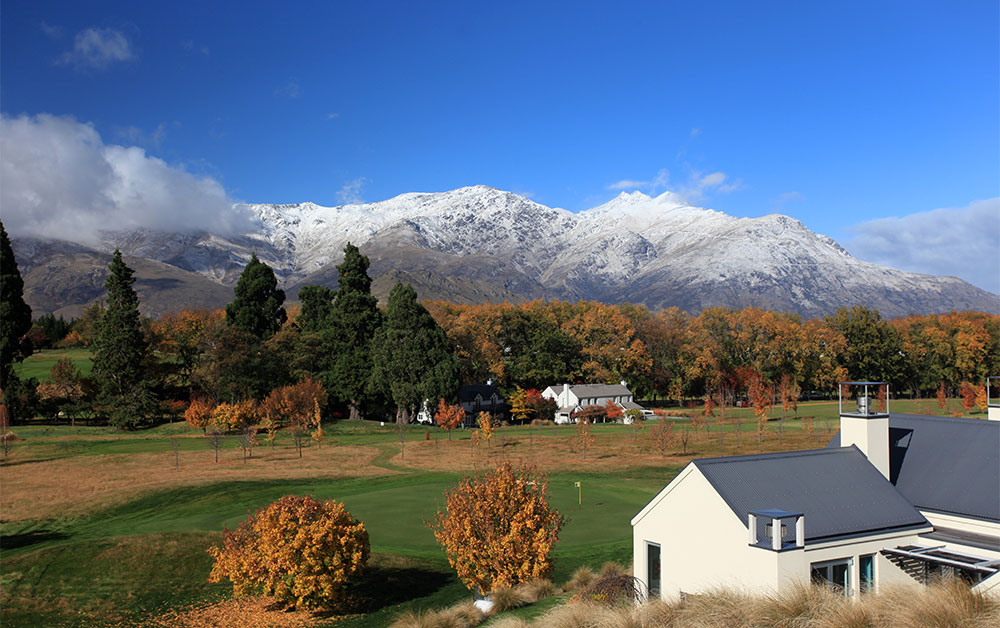When it opened in 1993, Millbrook Resort was a bit of a novelty. A deer farm had been transformed into a thoroughly modern golf course. The farm’s homestead was converted into a restaurant complemented by luxurious lodgings, all in a spectacular alpine location just outside Queenstown. The resort golf phenomenon had finally come to New Zealand.
Millbrook was a shot in the arm for a country full of golfers more accustomed to putting $5 into an honesty box and pulling a trolley around for 18 holes. But it wasn’t until the arrival of Kauri Cliffs and Cape Kidnappers that New Zealand golf ushered in a new era.

Wall Street investment banker Julian Robertson was the visionary behind Kauri and Kidnappers, the two resorts that served to highlight New Zealand’s natural beauty as a magnet for golfers. The success of those two courses inspired Jack’s Point and Tara Iti, the epic layout north of Auckland funded by American billionaire Ric Kayne.
Tara Iti is basking in the accolades with Tom Doak’s design ranked No.6 on the World’s 100 Greatest Golf Courses by Golf Digest. To put that into perspective, Tara Iti is considered the greatest golf course built in the past 100 years. Two more public-access courses are slated to be built alongside Tara Iti.
Along with Wellington’s timeless Paraparaumu Beach Golf Club, it’s absolutely remarkable that five New Zealand courses appear in a listing of the World’s Top 100 Golf Courses. In hindsight it seems a fait accompli that New Zealand would develop into a golf tourism juggernaut. But that simply wasn’t the case.

Take Queenstown, for example. Back in the mid-1990s there wasn’t the economy of scale to consider Queenstown a golf destination. Sure, Millbrook offered a resort-style experience but nothing else was aimed at the travelling golfer.
Fast forward a quarter of a century and greater Queenstown has emerged as one of the world’s great golf destinations. While the Melbourne Sandbelt has it covered from a golf purist’s point of view, there is no place like Queenstown for the sheer variety and aesthetic beauty of its golf. Six exceptional 18-hole layouts that embrace prairie, parkland and links golf and sit in the shadow of majestic mountain ranges.
Millbrook Resort has gone from strength to strength and is in the process of extending to 36 holes. Around the corner, enigmatic jeweller Sir Michael Hill indulged his imagination at ‘The Hills’ where he created an ultra-private club. In conjunction, The Hills and Millbrook now host the best tournament on the PGA Tour of Australasia in terms of depth of field, spectator engagement and TV viewing experience.

Elsewhere in Queenstown, the internationally acclaimed Jack’s Point is simply a mind-blowing experience with picture-postcard scenery on the banks of Lake Wakatipu. Queenstown Golf Club at Kelvin Heights has spent in excess of $750,000 on its facilities to give visitors the impression it’s a private club on what may be the most expensive real estate in the country. And international golfers have discovered the linksy Arrowtown Golf Club as the best-kept secret in all of New Zealand.
The golf construction boom has had a snowball effect. Perhaps shamed into action, traditional clubs such as Royal Wellington and Royal Auckland have undertaken major renovation work to improve their existing facilities. This golden age of New Zealand golf course construction has invigorated the sport and captivated golfers from around the world.

Phenomenal Growth In International Golfers
The success of golf tourism in New Zealand has a thousand fathers. But more than anything else the decision to establish a vehicle to drive golf tourism has been absolutely crucial. Golf Tourism New Zealand was formed in 2013 by the Key Government to ensure the golf industry was pulling together as a whole. It can’t be understated just how important it was to have a designated body to showcase New Zealand golf to the world.
Originally funded via Tourism New Zealand, the initiative was given a three-year goal of raising tourism revenues from $145 million to $223 million. Not only did it achieve that benchmark, golf tourism revenue now exceeds $400 million annually.
“The Golf Tourism New Zealand initiative has been a spectacular success – the numbers speaking for themselves,” says touring professional Greg Turner, who helped formulate the original blueprint.
“Critical in the implementation of the strategy has been Ryan Brandeburg as executive director. His deep understanding of the luxury golf travel sector and his network of connections have enabled wide reach in the specific niches inhabited by the high-end golf traveller.”

In the first five years since the launch of Golf Tourism New Zealand, the number of golfers visiting New Zealand has risen 26 percent annually. That translates to an increase from about 57,000 golfers in 2013 to more than 130,000 by 2018, according to data gleaned from visitor survey statistics.
Golfers are high-spending tourists. The average spend of a golf visitor from America has increased to $19,000. What’s more, regional areas have flourished with an influx of golfers. Some 31 (74 percent) of the 42 courses promoted via the GTNZ initiative lie outside Auckland, Wellington and Christchurch.
Significantly, it’s not just golf facilities that benefit from golf tourism. The actual golf courses capture just 5 to 10 percent of a visiting golfer’s spend, according to Golf Tourism New Zealand executive director Brandeburg. The overwhelming majority of a golf visitor’s spend goes towards accommodation, food and beverage, transportation and other activities.
“Golf is the carrot that we dangle to bring high-spending visitors here to participate in a wide range of activities in regional New Zealand and it is therefore impossible for golf courses to cover the cost of the golf tourism initiative,” Brandeburg says.

New Zealand’s growing appeal as a golf destination is validated by the fact it’s now on the radar as a potential host of the Presidents Cup in 2027. To even be considered as a credible host of such a major showpiece is evidence of how much New Zealand has matured in the short space of
a decade.
That’s a great credit to Brandeburg, who spent more than 200 days travelling the globe last year promoting New Zealand to the world. It’s also a great credit that the initiative has received bi-partisan support from both sides of government during the past six years.
Sure, New Zealand golf has undergone a complete rebirth after the addition of great new courses and wonderful amenities the length and breadth of the nation. It’s all very well to say if you build it they will come. But without conveying that message New Zealand would not have seen such phenomenal growth in visiting golfers.
Says Turner: “It is easy to underestimate the importance of connecting the product – in this case the marquee courses especially – with the target market. Elements like tracking the data, ensuring the courses are informed and engaged, and ensuring the international trade are aware of the latest happenings on the supply side will not happen without continued investment. Momentum is hard to build but very easy to lose.”



